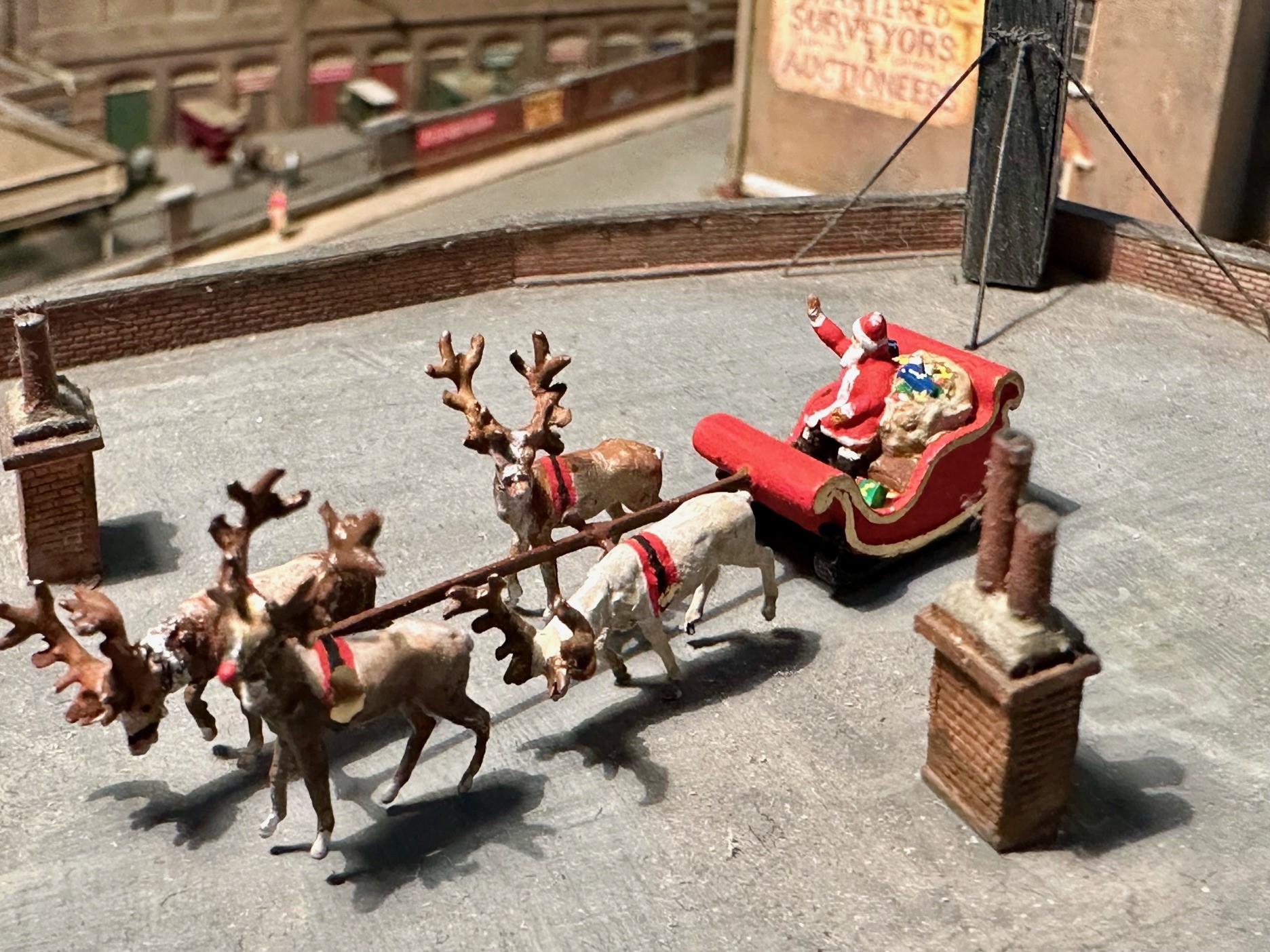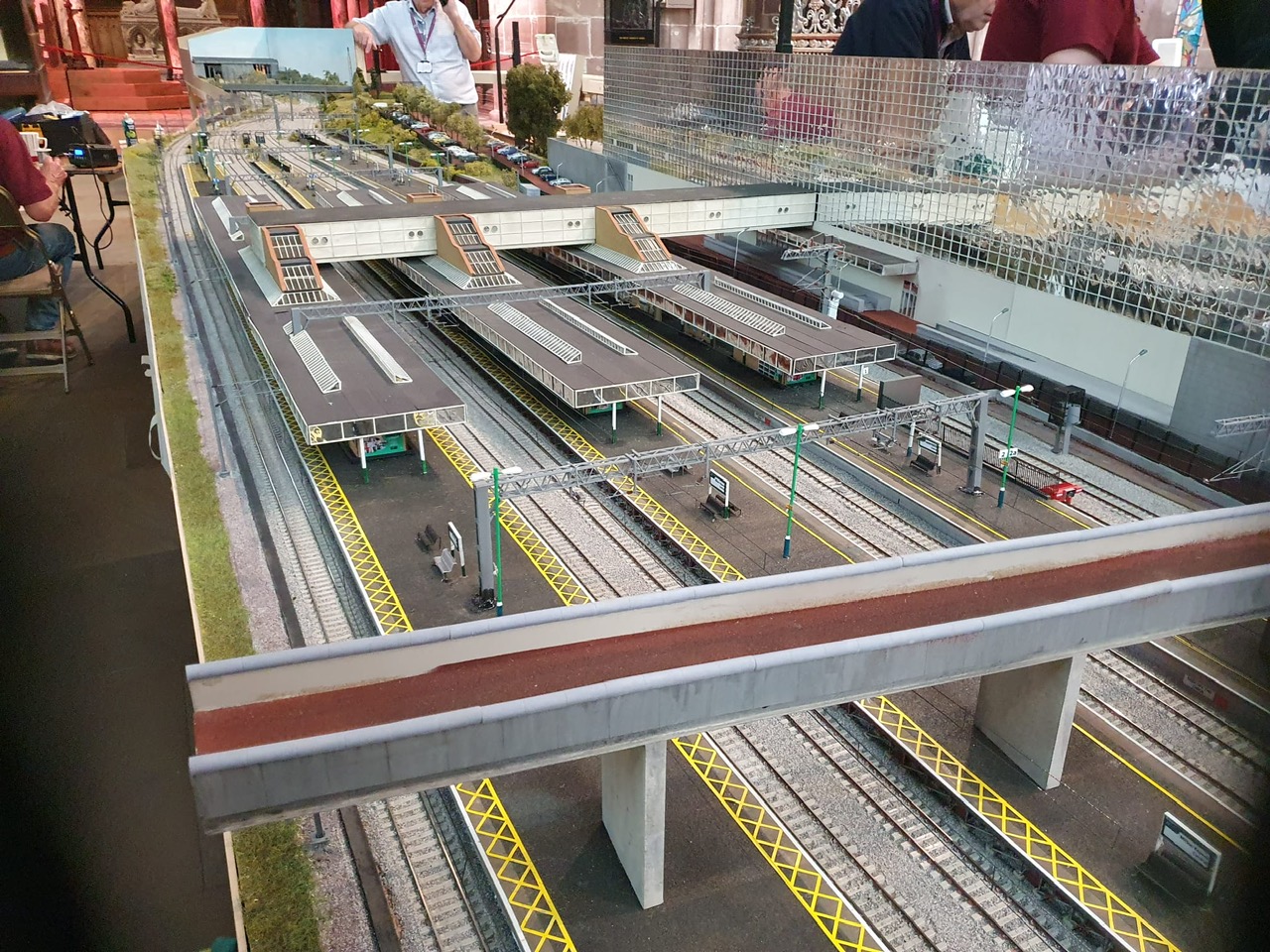Renumbering and Lettering DB Wagons
John Jesson
7th June 2020
5 minutes
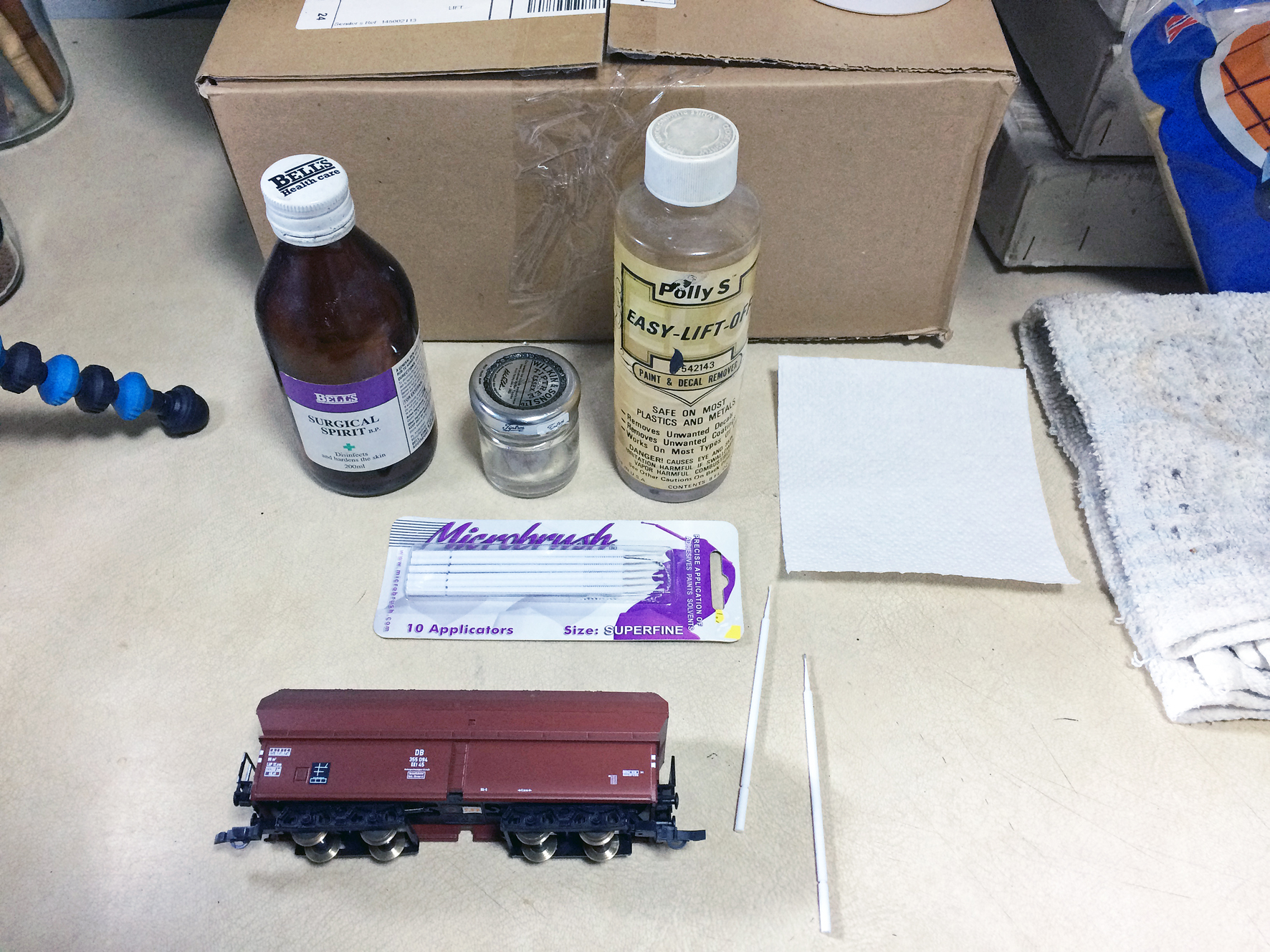
This really started when Ben was visiting me and the issue was raised of my set of 20 bogie hopper wagons that have only two running numbers. We jointly decided that it would be easier to replace the group of inscriptions on 3 lines (DB/wagon number/wagon designation) as a block, rather than try to replace just the number. Ben went away and developed replacement decals, researching not only the correct font styles for numbers and letters, but the spacing between lines.
Ben’s work expanded to include the unusual script used for the S160 US-built locos provided for Europe, but this is a story in its own right.
Having replacement decals is only one part of the job – another part is removing what is already there. There are probably a fair few products available to do the job of removing factory-applied inscriptions. I have two of them ready to hand, one very old, one new. The old product is from the American company Testor’s, PollyS Easy-Lift-Off, while the new is from DeLuxe, Strip Magic.
Both are designed to strip paint, so their use to remove inscriptions needed some experimentation. I fond the DeLuxe product to be too harsh for this work, although it is very good at its designed work. The PollyS, which is still available (although everyone in Britain seems to have run out), is more gentle and, with care, can remove the inscriptions without removing the underlying paint, although there will inevitably be some degree of marking.
After some experimenting, I found that using microbrushes is better than small paint brushes, both to apply the fluid and remove the softened inscriptions.
1 – dip the microbrush into the fluid (PollyS ELO) and dab onto the inscriptions. One dip will supply enough fluid to cover the whole of the KKt inscription (DB/number/type).
2 – after 2 – 3 mins, use same microbrush to wipe the softened inscriptions off the model. After each wipe, wipe off the accumulated paint on a paper towel. It takes about 8 wipes to clear the inscription.
3 – Immediately dip microbrush into the fluid again and gently rub over the area that has been cleaned off. This is to dilute whatever remains of the colour of the inscription.
4 – Again, immediately, use a small paint brush to swab the area with surgical spirit. Don’t limit the swab area to where the inscriptions have been, though, spread the spirit over an area about 5/6 times larger. This will not affect other markings and further dilutes any discolouration.
5 – Immediately swab with tap water, using a larger paint brush. Swab several times, then dab-dry with an absorbent material (towel or paper towel).
Notes:
PollyS recommend cleaning the fluid off with water. I find this leaves a mark. Using the surgical spirit first spreads the much-diluted paint residue over an area large enough that it is not visible. Surgical spirit is available over the counter at most pharmacists.
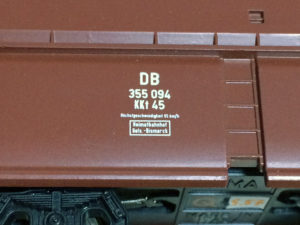
The starting point. This is the original inscription on all the wagons (some numbered 355094, some 355096). Rather than replace just the number, it is easier to replace the 3 lines, although care is needed to not damage the very small lettering of the maximum permitted speed and home depot.
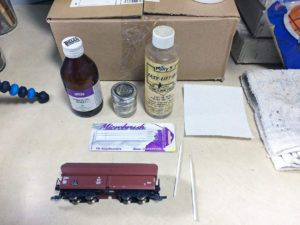
What is needed. PollyS Easy-Lift-Off (the bottle is too tall for comfort, so the small glass jar alongside also contains the same solution), surgical spirit, microbrushes, a bit of paper towel and, of course, the wagon itself.
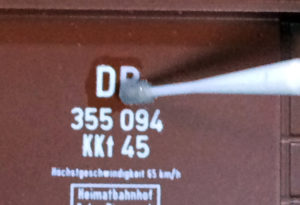
Starting to apply the ELO fluid with a microbrush. “Take some pictures” said Tom. Yeah, right! Just how many hands does he think I have? One to hold the model, one to manipulate the microbrush, one to hold the camera (actually, smartphone), one to hold a light in the right position. In the end, I dispensed with the light, laid the model flat on the table and juggled. This explains why the picture is a bit blurred.
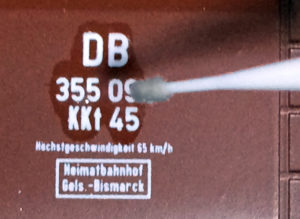
Just about all the area for removal covered by the fluid. One load of fluid is all that is needed to cover this area.
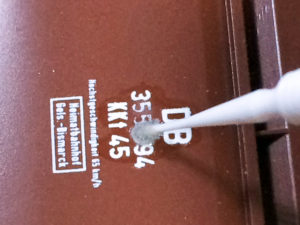
Starting to remove the inscriptions. It can be seen that the numbers are beginning to break up, with tiny bits of white paint literally floating about. At this stage, it is necessary to work quite quickly, so as to remove the inscriptions before the fluid starts to affect the underlying paint. So no more photos of this stage of the process.
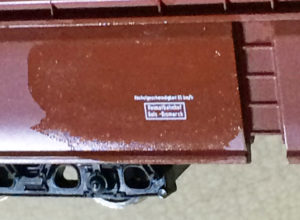
Inscriptions removed and area swabbed with surgical spirit.
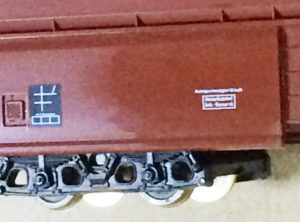
After swabbing with water. There is a slight glaze to the area, but it shows up much more in a photograph than it does to the eye. In any event, after the new inscriptions are applied, the whole wagon will be varnished.
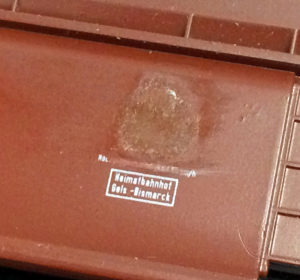
How not to do it. One of the first experiments, using Strip Magic. Not only have I allowed the fluid to spread too far, it has started to affect the underlying paint. This wagon is likely to end up rather more heavily weathered!
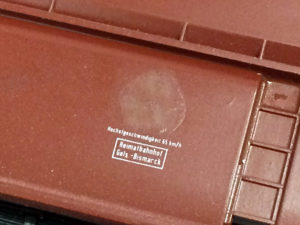
Strip Magic again, but at least I’ve managed to contain the fluid.
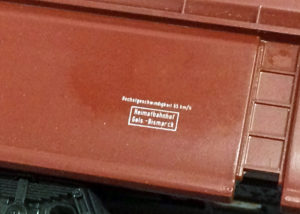
Another wagon done with the PollyS.
Thursday Track Nights
We are open on Thursday evenings from 7pm to 9pm at our Keen House clubrooms. Visitors are welcome, please come along and introduce yourself.
Address:
Keen House, 4 Calshot Street, London, N1 9DA
Become a member

